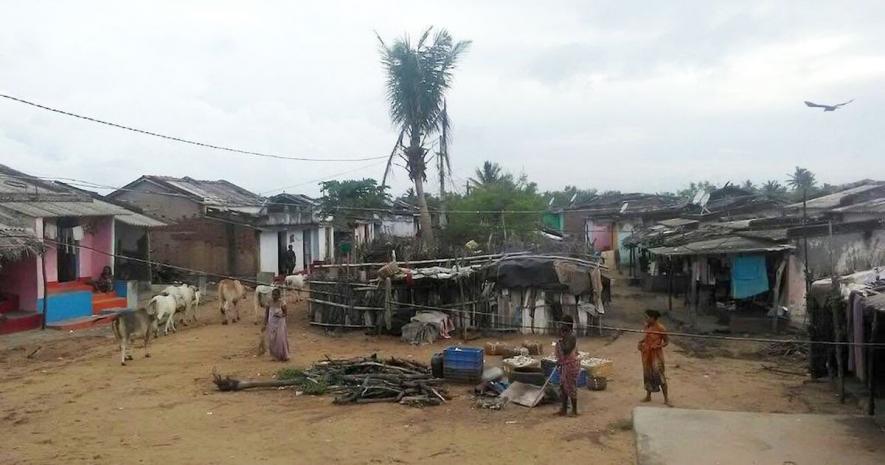COVID-19: Can Reverse Migration Help Revive Rural Economy of Odisha?

Representational image. | Image Courtesy: Scroll.in
Migration is a livelihood strategy adopted by millions of Indians. Much of this migration in India is happening either for work or employment or for small business, directed towards the urban areas. The implementation of nationwide lockdown brought a turmoil into the lives and livelihood of these migrant workers living in the cities who were primarily surviving through contribution of labour to the informal sector.
Data on migration reveals that the developed states with high per capita income have high in-migration rate such as Delhi, Goa, Haryana, Punjab, Maharashtra, Gujarat and Karnataka, compared to low-income states such as Bihar, Uttar Pradesh, Jharkhand, Rajasthan and Odisha. These low-income and underdeveloping states portray a relatively high rate of out-migration compared to the developed states of India. National Sample Survey Organisation, 2010 reported that about 30% migrants were working as casual workers and only 35% of migrant workers were employed as regular/salaried workers. Without having adequate social protection and safety measures, biased policies discounting the demands of millions of migrant workers working in various hazardous industries and mines, lack of basic minimum facilitates, illiteracy compounded with social discrimination and on top of it, the recent COVID-19 pandemic have pushed these migrant workers to the margin.
The Census 2011 reported that there are 13 lakh migrant workers in Odisha who had migrated to different parts of the country for various reasons. Of this, majority are in Andhra Pradesh (14.6%), followed by Gujarat (13.6%), West Bengal (11%) and Maharashtra (9%). Gujarat is the second highest choice of Odia migrants, with the majority (45%) of the total Odia migrants living in Gujarat for work or for business purposes. Of the total Odia migrants to Gujarat, around 30% are short-duration migrants i.e., they have lived in the Western state for less than four years. Majority of these migrants (particularly, to the city of Surat) are from the Ganjam district. The recent estimate indicates that around 7-8 lakh people migrate to Gujarat, most of them working in Surat.
After a green signal from the Centre amid the lockdown, the Odisha government has initiated the process of bringing back its migrant workers home. The government has pegged the number of these workers who are stranded in other states due to COVID-19 lockdown at 7.5 lakh. However, about 10 lakh stranded migrant workers and other natives have already registered with the Odisha government portal stating that they wish to return home.
The government has prepared 2.27 lakh beds in 7,200 isolation facilities in government-owned buildings (schools) across various Gram Panchayats. The government has also formulated a standard protocol for the return of the migrants. The migrants will undergo 14 days of compulsory quarantine and every person will be stamped with the date in indelible ink. Sample testing and subsequent health measures have been initiated by the government at each of the quarantine centres and Panchayats have been asked to provide cooked food with adequate arrangement of basic minimum facilities. Upon completion of 14 days of quarantine, each person will be given an incentive of Rs 2000.
Odisha has been experiencing one or the other form of disasters like flood, cyclone, tornado or drought year after year, and this year, the pandemic of COVID-19. The government has been proactive in taking various preventive and protective measures to deal with the natural disasters and to minimise loss of life and property by creating disaster resilient plans and programmes. However, the current pandemic has posed a bigger challenge to the government: to provide livelihood to the lakhs of returnee migrants. The present livelihood crisis could have been averted if the government would have strengthened the rural livelihood base of Ganjam by establishing a number of small and medium industries, including the port and mineral-based industries.
There have been several initiatives taken by the district administration in addressing the pandemic from the health front; however, a clear roadmap has to be developed to provide the means of livelihood and employment opportunities to the bigger chunk of migrant workers in the district. When the entire world is reeling under the economic recession, it is important that quick decisions be taken instead of waiting for orders coming from Bhubaneswar or from Delhi. Adequate preparation by the administration with visionary policy implementation can only save humanity during this pandemic. It is of prime importance that these migrants be offered a viable economic opportunity in the rural areas.
Also read: Democracy and Populist Politics During Lockdowns
The state can effectively engage the self help group (SHG) members by leveraging the collateral free credit of Rs 20 lakh extended to them as part of the Pradhan Mantri Garib Kalyan Yojana (PMGKY). In line with the government of Uttar Pradesh, it can instruct the SHGs to concentrate on producing items/commodities that have local demand; one-district-one-product model could be followed. Using the locally available raw material, supply chain disruption can be addressed and demand creation can be planned for rural areas. Government should facilitate the credit linkage to these SHGs and agencies, including the Farmer Producer Organisations and Panchayats can be engaged in procuring these products with a minimum assured price and facilitating appropriate market linkages.
Demand for additional 100 days of rural employment guarantee can also help the rural economy significantly. The state government has already announced this doubling of the work days in rural areas; however, an advance payment of at least 50 days’ wage, in a staggered manner, to the accounts of these migrant workers can ease the demand constraint in rural areas. Further, expanding the list of works to be undertaken through MGNREGS, including agricultural activities in private lands can also be helpful. Large-scale plantation, horticulture, fishery-related activities can be taken up including regular activities under MGNREGS to create demand for jobs in rural areas.
The government should also facilitate assured credit support to small rural enterprises. It can procure horticulture products from the doorstep of the farmers for a smooth supply chain after imparting required training to the migrant workers.
There have been reports stating that migrants from the quarantine centres are fleeing due to lack of basic facilities. The district administration should take a humanist approach towards these migrants during and after the quarantine period. Strict enforcement of law and order to control the already traumatized migrants would lead to an outbreak of famine and associated unrest in rural areas in addition to the pandemic.
Arabinda Acharya ([email protected]) is associated with CARE-India, Bhubaneswar. Nilachala Acharya ([email protected]) is associated with Centre for Budget and Governance Accountability, New Delhi. Views expressed here are personal.
Also read: RTI Reveals Chief Labour Commissioner's Office Has No Data on Stranded Migrant Workers
Get the latest reports & analysis with people's perspective on Protests, movements & deep analytical videos, discussions of the current affairs in your Telegram app. Subscribe to NewsClick's Telegram channel & get Real-Time updates on stories, as they get published on our website.
























